Republicans turn to old playbook linking crime to immigration as election season heats up
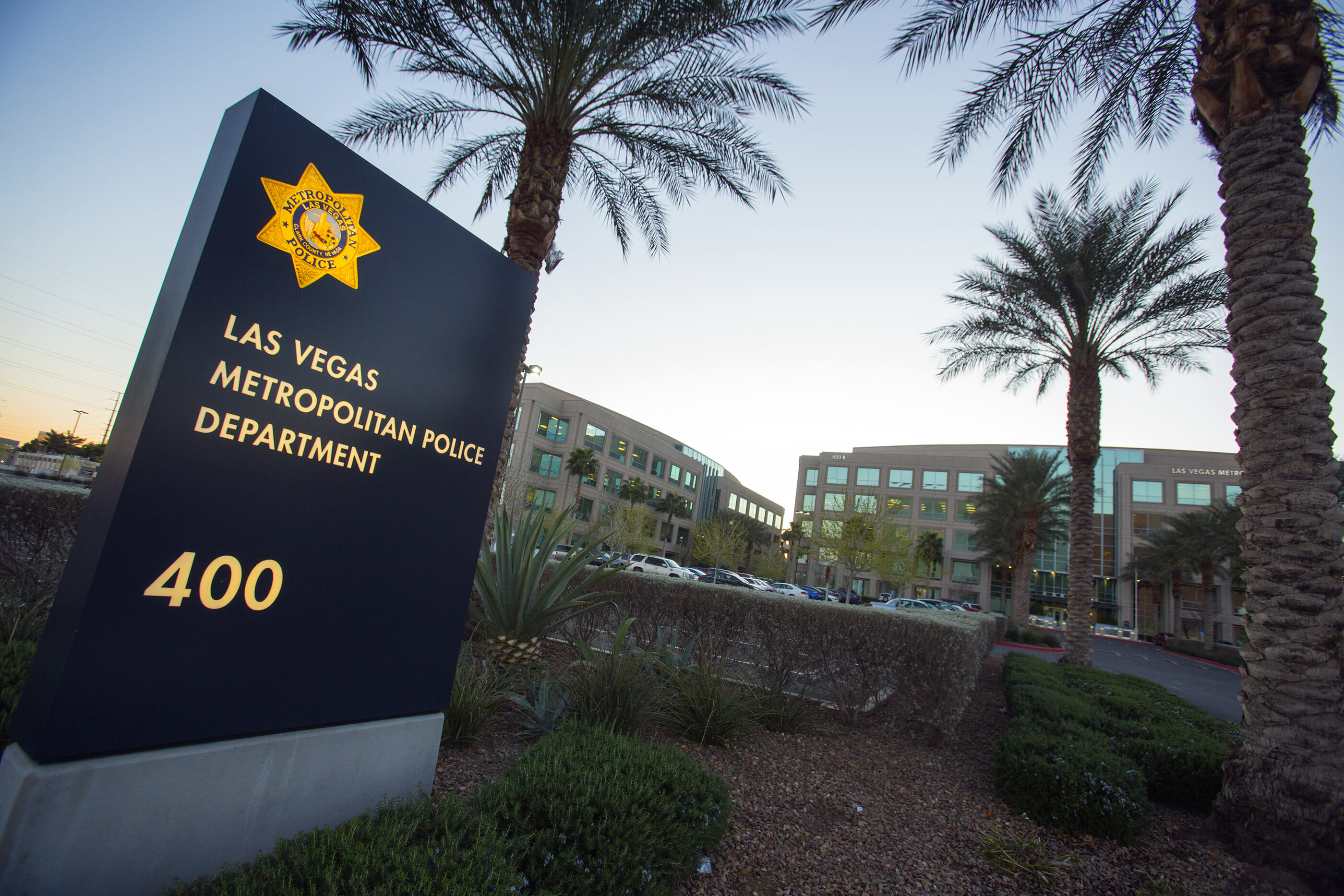
It was called “The Wave.”
The words come rapid-fire, the camera panning over darkened pictures of a border checkpoint and Hispanic men holding guns under a freeway overpass.
“Waves of illegal aliens streaming across our border, joining violent gangs, forcing families to live in fear,” the narrator of the political ad says, stock footage of a white couple laid under the word “fear.”
Aired just days before the 2010 midterm election, “The Wave” came as one of Republican Senate candidate Sharron Angle’s final salvos against longtime Democratic Sen. Harry Reid, the latest in a string of ads that included calling him “the best friend an illegal alien ever had.”
Angle’s messaging drew quick and widespread criticism, panned by Democrats and Hispanic groups alike as openly racist — though her campaign argued the ad was about “the rule of law.” It even famously drew the ire of The View’s Joy Behar, who, in reacting to the ad, called Angle “a moron, on top of being evil” before concluding the candidate was “going to hell, this bitch.”
Angle almost immediately raised $150,000 after the outburst, and her campaign sent Behar flowers in thanks.
But the ad, alongside others, also intensified some electoral alarm bells, as some observers began raising the specter that Angle’s long-running hardline positions on immigration were alienating an increasingly crucial bloc of Latino voters.
In a year when Republicans dominated congressional races as the Tea Party ascended, Reid — at one point that cycle labeled the single most vulnerable incumbent in the country — held his seat with more than 50 percent of the vote.
Twelve years later, what is old has become new again.
Nevada televisions have been bombarded for weeks with messaging echoes from a decade ago — pointing to surging encounters at the southern border, juxtaposing images of tattooed gang members alongside rival politicians amid not only a surge in violent crime statistics, but the highest number of migrants at the U.S.-Mexico border in two decades.

Research shows that there is little to no empirical evidence that higher levels of immigration correspond with higher rates of crime, even when those immigrants are undocumented. And though there are “concrete concerns” about increases in violent crime following the pandemic, Charis Kubrin, a criminology professor and researcher at the University of California, Irvine, said that any links to immigration are “completely politicized.”
“On average, across 50-plus studies … the relationship between immigration and crime is essentially null,” Kubrin said, pointing to a meta-analysis of research on the subject. “When there are significant findings, what we've found is they were 2.5 times more likely to be negative, meaning immigration goes up, crime goes down.”
But the realities laid out in the data — made more concrete as the body of work on the subject has swelled over the last two decades — have not slowed the crescendo of familiar political attacks tying rising numbers of encounters at the southern border to a post-pandemic surge in those violent crimes.
The message
At the center of the 2022 scrum is Clark County Sheriff Joe Lombardo, who has tied his campaign to his tenure as the chief of the largest police department in the state’s most populous county.
Looking to chip away at the sheriff’s presumptive lead, North Las Vegas Mayor John Lee began an aggressive television advertising campaign that attacked Lombardo’s record directly, casting him as a “RINO” — Republican In Name Only — that “loves sanctuary cities.”
Those words are superimposed over images of Lombardo, Democratic Gov. Steve Sisolak, and in the center of the frame, the only photo presented in full color: a trio of tattooed MS-13 gang members, all Hispanic.
Another Lee ad draws a direct connection between Lombardo and Wilber Ernesto Martinez Guzman, a Salvadoran immigrant in the country illegally who killed four people in Northern Nevada, far outside Lombardo's jurisdiction, in January 2019. A flashing headline appears in all-caps: “ILLEGAL IMMIGRANT, CHARGED WITH MURDER IN 4 NEVADA KILLINGS.”
Lee is not alone.
Reno lawyer Joey Gilbert’s website says Nevada “cannot afford to take asylum seekers” and that: “I would not allow our state to be sent people who came over the border illegally, and let them cut in front of those who are trying to come here lawfully.”
Former Sen. Dean Heller, similarly, has often been first in line to attack Lombardo, saying at a candidate forum on April 26: “If you have a sanctuary city, you have a dangerous community. You practice catch and release, and you have a dangerous community.”
The term “sanctuary city” has no firm legal definition in Nevada, and has been used more broadly to describe an umbrella of state and local laws that have sought to limit the cooperation between local law enforcement agencies and federal immigration enforcement.
Though some cities and states, including Washington, Oregon and California, have implemented some form of a formal sanctuary law, Nevada has not. However, the Las Vegas Metropolitan Police Department (Metro) in 2019 under Lombardo did end cooperation with ICE under the controversial 287(g) program, which allowed for so-called “detainers” to hold undocumented individuals in local jails longer than normal in order to provide ICE an opportunity to move them to immigration detention facilities.
At the time, Lombardo called a court ruling that spurred the decision “a setback,” but the Las Vegas Review-Journal reported last year that Metro had continued to quietly work with ICE to help them seize undocumented immigrants jailed for nonviolent crimes.
In the time since, he has chafed at “sanctuary” criticism — saying at a candidate forum on April 26 that he was “freaking tired of hearing it.”
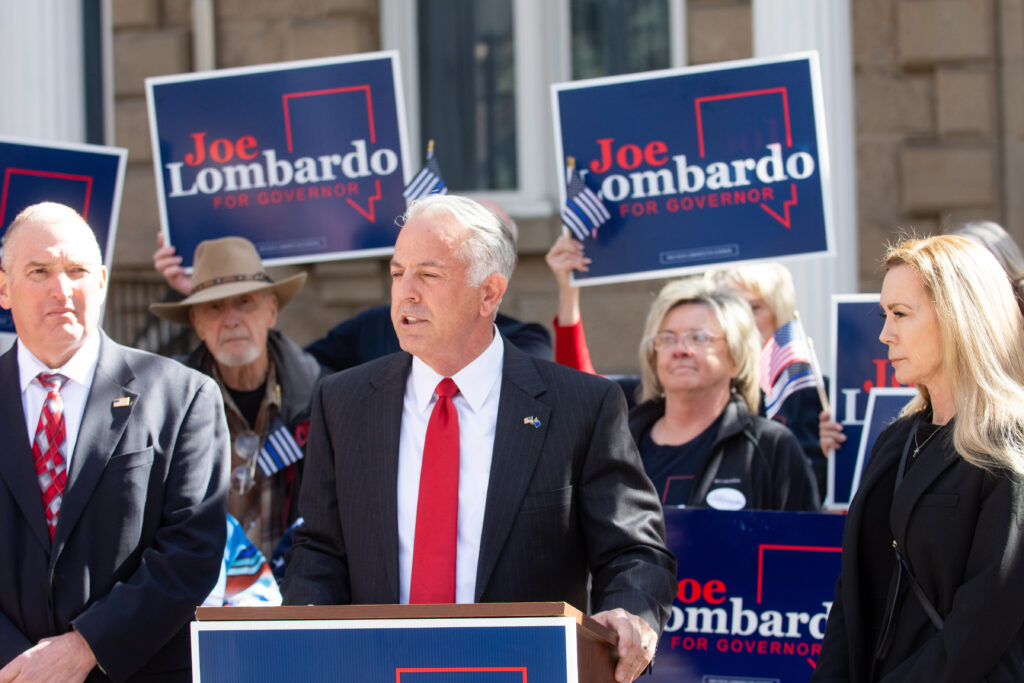
“There is no sanctuary jurisdiction in Clark County or the state of Nevada,” Lombardo said. “There is no catch or release program in the state of Nevada.”
In a TV blitz of his own sent to air just 10 days after Lee’s ad aired, Lombardo hit back at Lee and his other intra-party rivals as “keyboard cowboys.”
“They talk tough about immigration, but none of them have locked up or deported a single violent criminal, not one.” Lombardo says to the camera. “I’ve deported thousands.”
And on the issue of deportations more broadly, Lombardo has gone even further. In 2021, he told an event crowd that he played some role in the “removal from Nevada” of roughly 10,000 people. In an interview, he later clarified that that number was over the course of his entire career, and that the average was likely closer to 1,100 per year over the last three years.
A focus on drug crime
Even as old arguments have emerged on the campaign trail, some messaging has taken on modern twists. In particular, Republicans have sought to hammer Democrats in charge of the border on the issue of drug trafficking, linking the human misery of the opioid epidemic and other illicit drugs to policies governing the southern border.
In an interview with The Nevada Independent, Heller said there was not necessarily a direct link between immigrants and crime, but that “it's the amount of drugs that come in from our southern border.”
“Every fentanyl death in Nevada is a government mistake, a government error, a government doing its job poorly,” Heller said.
Though drug seizures by weight have varied according to public data from Customs and Border Protection (CBP) — rising in 2020 before falling again in 2021, largely off the back of reduced numbers in marijuana seizures — the amount of fentanyl seized has risen sharply in the last three years.
Border agents seized roughly 11,200 pounds of fentanyl in 2021. It was a small fraction of the 1.1 million pounds of drugs seized, but still a dramatic increase from the near-4,800 pounds seized the year prior.
Still, according to her research and others, Kubrin said any link between drug crime and immigrants as a group, while plausible, was highly unlikely, as lower crime rates in higher-immigrant areas reflect behavior of both immigrants and the native born population.
“It's very unlikely that immigrants are bringing over drugs that native born individuals are selling,” Kubrin said. “It still seems misplaced to me to focus only on immigrants in that crime problem. It just doesn't seem like a major accounting of crime.”
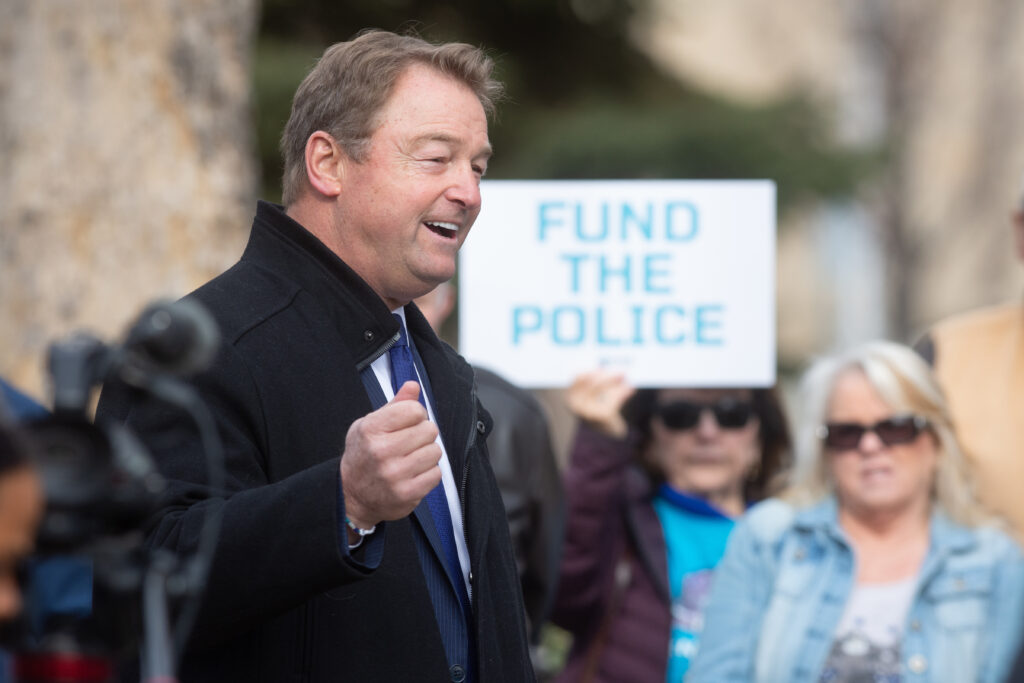
But in the race for the U.S. Senate, free from the granularity of fights over Lombardo’s record, Republicans have repeated similar talking points closely connecting crime and immigration.
At an event in Las Vegas last month, former Attorney General Adam Laxalt told the crowd that incumbent Democrat Sen. Catherine Cortez Masto had “abandoned law enforcement when they needed her most,” and accused her of “standing with the left and the [Black Lives Matter] movement” during the protests and later riots that followed the killing of George Floyd by police.
Cortez Masto, also a former state attorney general, has rebuffed the most fervent calls from Democratic activists to “defund the police,” telling KUNR Public Radio as early as June 2020 that she instead supported more general police reform.
Last August, Cortez Masto was also among the unanimous vote in the Senate for a Republican-led budget amendment that would limit certain federal funding for local jurisdictions that moved to defund their police departments — a vote that came amid stated concerns among Democrats that the “defund” movement presented an electoral liability.
Her campaign has since shot back by raising Laxalt’s arrest when he was a teenager for assaulting a police officer — and later failing to disclose that arrest to the state bar association.
But as crime has emerged on the Senate campaign trail, so has immigration. In his speeches, Laxalt has often pivoted to the U.S.-Mexico border, where he mocked President Joe Biden for describing the situation as “under control,” and said that “if this is under control — I don’t know how much worse it could get.”
“These open border policies that President Biden and Senator Masto presided over have made our communities less safe and made America less safe,” Laxalt said.
Laxalt’s chief Republican rival, Sam Brown, has similarly described the issue as a “border crisis” that has allowed drugs, trafficking and violent crime “to destroy lives and communities.”
He has also backed the completion of the Trump border wall, and on May 2, tweeted: “When you have a government that ignores crime in the streets AND allows anyone to enter the country at will, you don’t have a government working for the people.”
Rhetoric versus the data
The electoral and political linkage of immigration trends with crime “goes all the way back in American history,” according to Michael Green, an associate professor of history at UNLV.
“[Immigrant neighborhoods] tended to be poorer areas, and there tended to be a good amount of crime,” Green said. “It was really easy pickings for a politician who was of mind to try to pin blame on certain people.”
Since the middle of the 20th century, Green said, Republican politicians have followed in the footsteps of President Richard Nixon, who staked his campaign in no small part on the restoration of “law and order” at the tail end of the tumultuous 1960s.
In the shadow of a pandemic, social upheaval and some of the largest movements of migrants worldwide since the end of World War II, Green said that some of those same historical contours have emerged again.
“One of the things historians like to quote is the line ‘history doesn’t repeat itself, but it rhymes,’” Green said. “And there's a lot of rhyming going on.”
But despite decades of rhetoric tying immigrants — and more recently, undocumented immigrants crossing the southern border — to violent crime, empirical studies on the subject suggest not only that crime rates are not affected by deportation programs aimed specifically at undocumented migrants, but that immigrants as a whole tend to commit fewer crimes than native citizens.
In one case, researchers from the University of Chicago looked to the Secure Communities program, a precursor to 287(g) and one of several partnerships between ICE and local police that allowed immigration enforcement to cross-check fingerprints for individuals booked by state and local police departments. Started in 2008 with a staggered rollout across the country, the program rapidly expanded through the Obama administration before being suspended in 2014 — and ultimately restarted in 2017.
Though ICE has touted the success of the program — at one point boasting on its webpage of deporting more than 363,000 people between the program’s inception and the end of 2017 — a 2014 study comparing communities with Secure Communities to those without found no observable effect on overall crime rates.
More than that, Kubrin — the researcher from UC Irvine — said the Secure Communities program also created “collateral consequences,” including fewer people reporting being victimized by crime, and an increase in the number of lawsuits alleging racial profiling by police.
And though data limitations have left the subject of undocumented immigrants generally understudied, an analysis in 2017 by the libertarian Cato Institute comparing incarceration rates by immigration status found that undocumented immigrants were 44 percent less likely to be jailed than native born citizens, and legal immigrants 69 percent less likely.
Similarly, researchers at the University of Wisconsin-Madison found in a 2020 study that among 1.8 million arrests logged in Texas between 2012 and 2018, native citizens were more than twice as likely to be arrested for violent crimes than undocumented immigrants and nearly four times as likely to be arrested for property crimes.
“Consistent with a lot of the work that I and others have done, they find that the presence of undocumented immigrants has zero relationship — it's essentially a null relationship — with violent crime,” Kubrin said.
Still, Kubrin said the absence of a link between immigration and crime does not mean that either issue is not pressing in its own right, or otherwise unworthy of attention by policy makers.
“While there's no reason to make a link between increasing crime rates right now and what's happening at the border … to pretend that nothing's happening at the border, and that we don't need to overhaul our immigration policy, is also problematic,” she said.
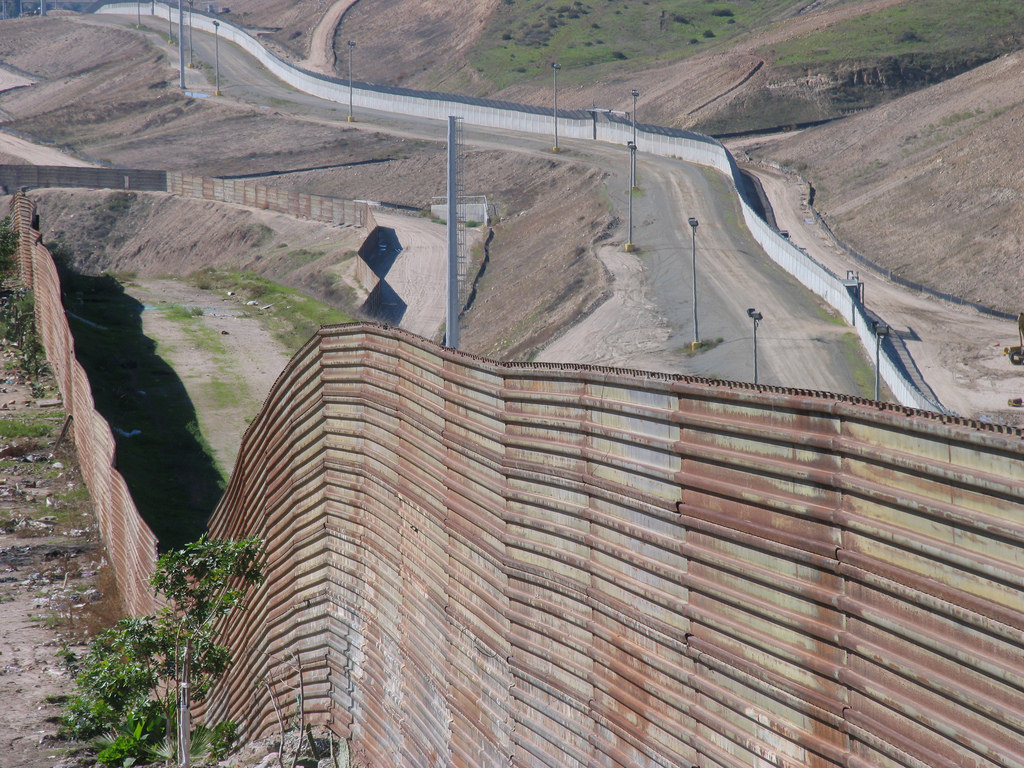
The situation at the border
As Republicans have ratcheted up rhetoric on the border, the number of migrants crossing the border has increased through the first few months of 2022. U.S. Border Patrol data show the number of encounters rising per month, hitting a peak of nearly 210,000 encounters in March 2022, the highest monthly total since 2000.
Key to the current situation on the border is Title 42, a World War II-era policy meant to slow the spread of communicable diseases. It was triggered at the beginning of the pandemic under the Trump White House, though Trump advisers who had worked for years to curb immigration had been looking to invoke the law even before COVID had emerged.
It has since allowed federal immigration enforcement to more quickly deport migrants and deny entry to those seeking asylum in the U.S.
Almost half of the encounters at the border in March — 107,000 — were Title 42 expulsions, and since the beginning of the pandemic, more than 1.8 million migrants have been expelled under the law, though officials with DHS have cautioned that official statistics may double-count migrants who are turned away under Title 42 multiple times.
In April, Department of Homeland Security (DHS) officials released a written plan outlining a proposal to lift Title 42 on May 23 — and in the weeks since, it has roiled swing-state Democrats and other moderates who have characterized the move as one being made too soon.
Officials had already begun winding down the policy last month, but were halted after a federal judge in Louisiana blocked the Biden Administration from taking action ahead of the May 23 end-date, and the specifics of the policy’s lifting remain fluid.
Democrats toe the line on immigration
The consequences of the enactment of Title 42 on asylum seekers have proven most controversial, as immigration advocates and progressive Democrats have pushed party leaders for a vote in Congress.
Though high-profile moderate Democrats, including West Virginia Sen. Joe Manchin and Arizona Sen. Kyrsten Sinema, have criticized efforts to lift Title 42 as premature — so too have a number of the most vulnerable Democrats across Capitol Hill.
That includes Nevada Sen. Catherine Cortez Masto, who — alongside dozens of other congressional Democrats — had initially opposed the use of Title 42 and other policies limiting asylum seekers in the early days of the pandemic.
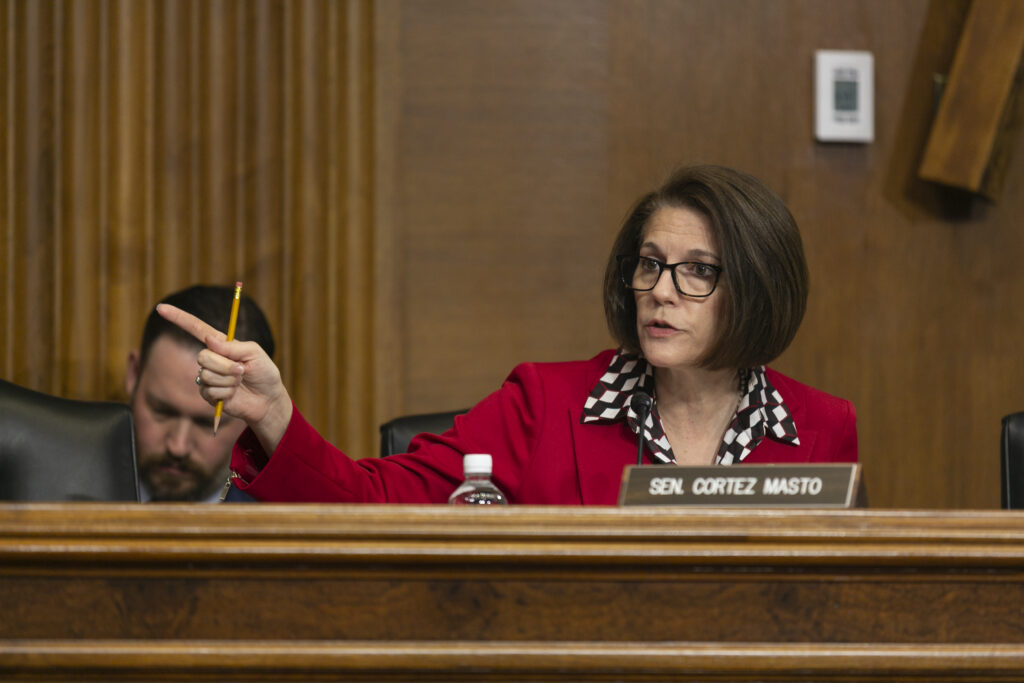
On April 5, however, Cortez Masto had told Politico that "I think it's just wrong to do it without a detailed plan.” She later told The Nevada Independent at the end of the month, after DHS released its Title 42 guidelines, that she still had not seen a “comprehensive plan.”
Though Republicans have seized on Cortez Masto’s stance as a flip-flop, the Democrat has sought to draw a fine line between her two positions as non-contradictory.
“I’m pretty clear,” Cortez Masto again told Politico. “I didn’t support Title 42 in the beginning, I don’t support repealing it now until there’s a plan to address the surge and address the broken immigration system.”
In Nevada, she’s since been joined by a pair of her fellow Democrats — Rep. Susie Lee and Gov. Steve Sisolak — who have both also raised concerns over the lack of a “detailed plan.”
Sisolak said lifting Title 42 would “create chaos at the border,” and Lee told The Nevada Independent last month that she did not “feel like the plan that they submitted was sufficient.”
“It doesn’t make me feel comfortable,” Lee said.
Still, immigration advocates have sounded the alarm over the last few months, claiming that Democrats could risk alienating parts of their base, especially Latinos, if they defer to the Republican position on immigration.
More than that, some advocates say, it’s a policy that risks increased harm to asylum seekers, often fleeing violence at home, who are forced to stay in Mexico.
In an interview, Michael Kagan, a law professor and director of the UNLV Immigration Clinic, called Title 42 an “aberrational policy” that “breaks from both American law and American values.”
“It literally leaves people to die and to be kidnapped and to be victimized by criminals in Mexico,” Kagan said. “It’s not justified by public health, and it’s dismaying that people who have cast themselves as advocates for immigrants are now advocating to keep one of Donald Trump’s harshest policies in place.”
